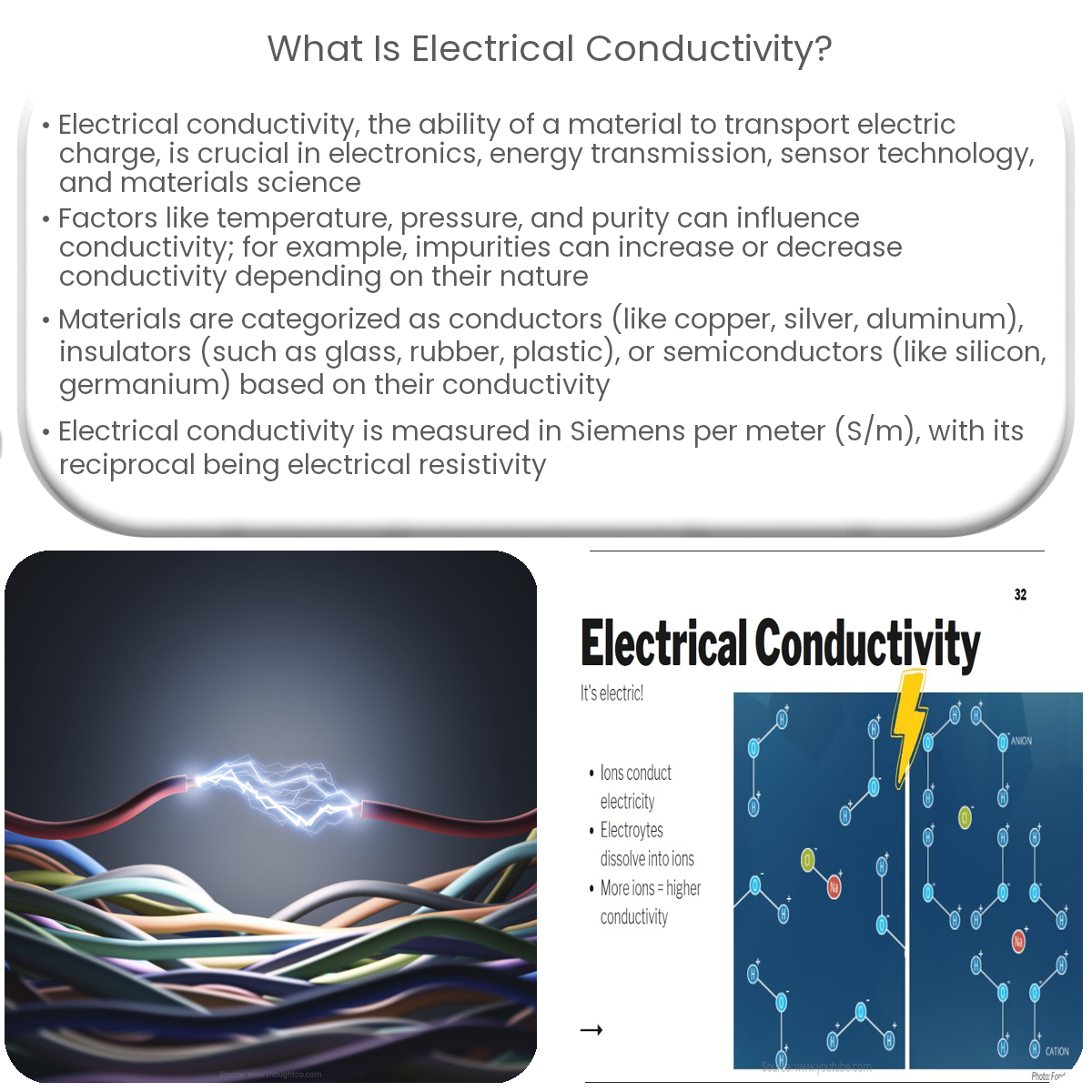Electrical conductivity is a material’s ability to allow electric current flow, and it’s crucial for applications in electronics, energy transmission, and sensors.
Understanding Electrical Conductivity
Electrical conductivity is a measure of a material’s ability to allow the flow of electric current. In other words, it is the ease with which a material can transport electric charge. Conductivity is an essential property of materials and has a wide range of applications in the electronics industry and various scientific fields.
Factors Affecting Electrical Conductivity
Several factors can influence the electrical conductivity of a material, including its temperature, pressure, and purity. Generally, the conductivity of a substance increases with an increase in temperature. However, this is not always the case, as some materials like semiconductors exhibit the opposite behavior. Additionally, impurities in a material can either increase or decrease its conductivity, depending on the nature of the impurities and the material itself.
Conductors, Insulators, and Semiconductors
Materials are classified into three main categories based on their electrical conductivity:
- Conductors: These materials have high electrical conductivity, allowing electric current to flow through them easily. Examples of good conductors include metals such as copper, silver, and aluminum.
- Insulators: Insulators have low electrical conductivity, preventing or severely limiting the flow of electric current. Common insulators include glass, rubber, and plastic.
- Semiconductors: Semiconductors have electrical conductivity values that fall between those of conductors and insulators. Silicon and germanium are examples of widely used semiconductors. Their conductivity can be manipulated by adding impurities or controlling their temperature, making them ideal for electronic devices.
Units and Measurement of Electrical Conductivity
Electrical conductivity is expressed in units of Siemens per meter (S/m). The reciprocal of electrical conductivity is electrical resistivity, which measures the material’s opposition to the flow of electric current. Resistivity is measured in units of ohm-meters (Ω·m).
Applications of Electrical Conductivity
Electrical conductivity plays a crucial role in various applications, including:
- Electronics industry: Conductive materials are used in the manufacturing of wires, cables, and electronic components, while insulators provide safety and protection.
- Energy transmission: High-conductivity materials are essential for efficient transmission of electrical power over long distances.
- Sensors: Conductivity sensors are used to monitor the quality of water and other liquids by measuring the concentration of ions in the solution.
- Material science: Understanding and manipulating the electrical conductivity of materials is fundamental in the development of new technologies and applications.


